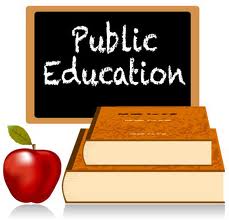Public Pickups
At a time when pickup motor motor truck sales are picking up, General engines has taken the covers off of the next lifetime of its bread and dairy spread pickup trucks: The Chevy Silverado and the GMC Sierra.
“This is a gorgeous truck,” said assess Reuss, leader of GM North America. “This isn’t going to be ostentatious. It is going to be highly engineered, highly considered out and positioned well from a market standpoint.”
The new Silverado and Sierra each characteristic much needed updating both in fashioning and presentation. The gaze of both motor trucks has been revised with an all new cab, and arrive with a V-6 or V-8 engine — consigning comparable fuel efficiency. (Read More: Ford Hybrid MPG argument Won’t Slow Sales)
Reuss noted the new trucks are “positioned rather differently than our competition.”
GM Partially reveals 2014 Silverado
Mark Reuss, GM North America president, converses about his company’s newest pick-up, regardless of an inventory buildup of trucks, with CNBCs Phil LeBeau.
Making Room for the New motor trucks:
General engines knew this would be a tricky alteration. Still, after months of designing the country’s biggest automaker finds itself wrestling with a dilemma — phasing out a glut of present generation pick-up motor motor trucks to make room for the next-generation of trucks in late jump.

At the end of November, GM was sitting on 139 days provide of pickups. That is nearly twice the preferred, normal provide of any vehicle. As a result, GM has been compelled to add another $2,000 in inducements to help clear out the backlog.
For a business that has been showing uncharacteristic control and respect when it arrives to bypassing higher inducements, the move to goose sales is a reminder of the old GM. Before it went through bankruptcy, GM was putting so much cash on the hood of its vehicles it cut into earnings. Reuss clarified how this new around of incentives is distinct and more a case of holding up with the competition. “We missed November and calling the incentive load that we had, we have amended that.”
Catching Up in Pickup Sales
For General Motors, the new trucks will strike showrooms at a critical time. The pickup motor truck market has started to pick-up with the recovery in lodgings. With the oldest truck forms in showrooms, GM has lagged its competitors in sales.
Reuss expects GM to catch-up with the affray as it clears out the present Silverado and Sierra forms and transitions to the next-generation in the jump. “We believe we will be in good form here as we take our plants down and insert the new truck,” Reuss documented. “We are right on pathway. We believe we are in a good place.”
NOAA hunts for Public commentary
NOAA hunts for Public commentary on increasing Gulf of the Farallones and Cordell Bank nationwide Marine Sanctuaries
Off Northern California
NOAA’s agency of nationwide Marine Sanctuaries broadcast today it will begin a public method to reconsider the boundaries for its Gulf of the Farallones and Cordell Bank nationwide marine sanctuaries off to the north California. The bureau is soliciting public remarks on this boundary reconsider through stride 1.
The sanctuaries, established by Congress in the 1980s, together defend almost 2,000 square miles of ocean beside the seaboard area of San Francisco. The proposed expansion locality is north of the living sanctuaries and extends from Bodega Bay in Sonoma shire to Alder Creek in Mendocino shire. This area encompasses issue Arena-North America’s most strong “upwelling” site-which is dwelling to varied species and a productive ecosystem.
NOAA will review these remarks to work out if an expansion is beneficial, and if so, will prepare a preliminary ecological impact statement (EIS) to consider expansion alternatives. Any draft EIS will be subsequently made through a public process under the National ecological principle proceed. one time a preliminary EIS is completed, it will be opened for public commentary afresh before last action is taken. This method will not revisit or change the regulations for the present sanctuaries.
“The waters off the northern California seaboard area are incredibly nutrient-rich and propel the whole natural system and, for nearly a decade, localizedized communities have been petitioning their voted into office officials to elaborate sanctuary defence to these areas,” said Daniel J. Basta, director of the NOAA’s Office of National Marine Sanctuaries.

NOAA hunts for Public commentary
In 2008, throughout a reconsider of the two sanctuaries’ administration plans, NOAA was advised to facilitate a public process in the next five years to double-check that sanctuary boundaries were inclusive of the surrounding area’s natural assets and environmental features. member of the senate Barbara Boxer and Representative Lynn Woolsey have furthermore presented legislation in every assembly since 2003 to expand the sanctuaries’ boundaries.
Three scoping meetings are planned for the public to discover more about the suggestion and submit comments. Public meetings will be held on the following designated days, locations, and times:
Bodega embayment Grange auditorium, Bodega embayment, Calif., Jan. 24, 6:00 p.m.
issue Arena High School, issue Arena, Calif., Feb. 12, 6:00 p.m.
Gualala Community Center, Gualala, Calif., Feb. 13, 6:00 p.m.
remarks on the suggested boundary expansion may also be submitted by March 1, 2013 via:
Federal eRulemaking Portal: http://www.regulations.gov. Submit electrical devices remarks by the government eRulemaking Portal with Docket Number NOAA-NOS-2012-0228
posted letters: Maria dark, Sanctuary Superintendent, Gulf of the Farallones nationwide Marine Sanctuary, 991 Marine propel, The Presidio San Francisco, CA 94129
Gulf of the Farallones nationwide Marine Sanctuary, designated in 1981, and Cordell Bank nationwide Marine Sanctuary, designated in 1989, both assist substantially to sea and coastal administration by engaging in public outreach and learning to promote stewardship, carrying out technical and applied research plans, and evolving and carrying programs that reinforce asset defence for the long-term health of the district.
Gulf of the Farallones nationwide Marine Sanctuary encompasses nearly 1,300 rectangle miles of ocean and coastal waters beyond California’s Golden barrier connection. The sanctuary supports an plenty of species encompassing the biggest breeding seabird rookery in the contiguous joined States, and other species such as whales and white sharks. Visit http://www.farallones.noaa.gov.
Cordell Bank nationwide Marine Sanctuary, established 42 miles north of San Francisco, is a destination feeding area for localized and migratory marine life. The sanctuary’s creative waters and exclusive undersea topography provide the base for a wealthy and varied marine community. Visit http://www.cordellbank.noaa.gov.
NOAA’s operation is to realise and predict alterations in the Earth’s natural natural environment, from the depths of the ocean to the exterior of the sun, and to conserve and manage our seaboard and marine assets. Join us on Facebooklink departs government location, Twitterlink departs government location and our other communal newspapers channels.
Public Pickups
Americans are now confronted with two fundamentally distinct visions of public learning. Which vision ultimately prevails will go a long way toward working out the quality of the learning accessible to future generations of children.
The first — call it the “private” — dream can be seen in the well-funded efforts in states and localities over the homeland to dismantle numerous of the fundamental organisations of public learning that have evolved since the mid-19th years and to replace them with forms borrowed from the personal part.
These efforts encompass unfettered expansion of charter schools, numerous of them run by for-profit companies (Louisiana); vouchers to middle class families for personal school tuition (Wisconsin); and tax credits for those who pledge to “scholarship” funds for personal schools (Virginia). The personal vision has received millions of dollars of support from foremost bases, including barriers and Walton, and from wealthy persons.
The second, or “public,” dream hunts for to preserve customary structures of public school schemes while accepting that the time has arrive to diversify the ways in which learning is delivered. This dream recently received a increase in Florida, where voters beaten an amendment that would have cleared the way for a statewide voucher program. previous this month a judge in Louisiana ruled that the state’s new voucher program violates the state Constitution because it relies on funds proposed for public schools.
The personal vision of public learning is truly fundamental in three important values:
First, it severs the attachment between public schools and the civic purposes for which they were established and that justify the use of taxpayer dollars to fund them. Implicit in this dream is the notion that the advantages of learning accrue first and foremost to individuals and that public advantages are easily the sum of personal ones.
Second, it declines the idea of an learning scheme. Those who outlook learning primarily as a collection of unaligned schools assisting personal interests have few incentives to guarantee that multiple stakeholders — students, teachers, managers, policy makers, the enterprise community and other ones — work together through democratic institutions in pursuit of common goals.
Third, the private education dream leaves little room for values of social fairness and the firm pledge to identical informative opening for all children. By emphasizing privatization and affray rather than community and cooperation, it trivializes the entire notion of “public” education. neither does it take responsibility for speaking to the special trials that disadvantaged children bring with them when they stroll through the schoolhouse doorway.
Public schools in the U.S. have always operated at the intersection of two sets of legitimate rights: those of persons, including parents, to pursue their own best concerns and those of humanity as a whole to perpetuate popular standards and to encourage collective prosperity.
By and large Americans have discovered ways to strike a balance between these two objectives. Public schools have assisted as motors of up mobility for millions of individuals, encompassing swell of immigrants, while going by car financial development by providing an educated workforce. By emphasizing personal concerns nearly solely at the total cost of public ones, the private dream, with millions of dollars behind it, intimidates to undermine this chronicled balance.
To state that public schools should assist public purposes is not to say that all schools should be the identical or that they should only be functioned by government employees. One-size-fits-all schooling does not rendezvous all children’s informative needs.

public education
An enlightened public dream of learning welcomes increased parental alternative as well as varied types of delivery such as vessel for hire schools, virtual schools or other new kinds of institutions — so long as they function within apparently particular guidelines that respect and promote both collective and individual concerns. While collective concerns may differ from state to state or from community to community, they are expected to rotate around matters such as equal access to value schools, student diversity, cost-efficient use of school facilities, transport and enrollment steadiness that allows for productive designing.
The choice between the two visions is stark, and the stakes are high. learning is an investment in the future of children and furthermore in the future of each state. States that go wrong to supply access to value learning for all students today will be trashing their most precious asset: their people. And the more that states move in the direction of a personal vision that privileges one-by-one over collective concerns, the more difficult it will be to turn around course in the future.
Helen F. Ladd is a lecturer of public principle and economics at Duke University’s Sanford School of Public principle. Edward B. Fiske, a former learning reviewer of The New York Times, is the scribe of the “Fiske Guide to Colleges.”
